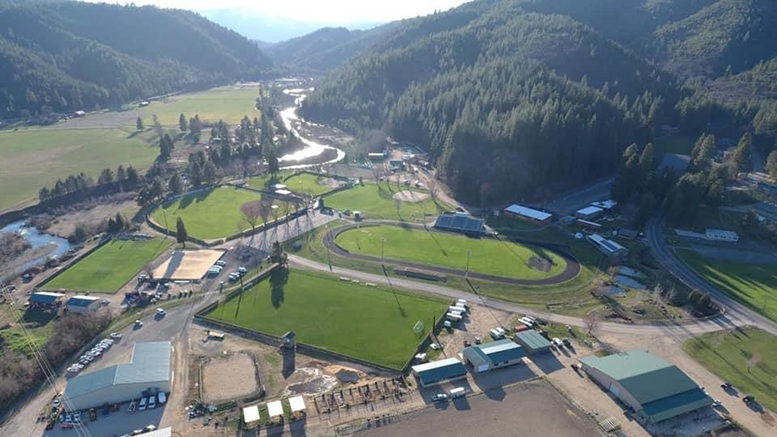With evacuations lifted this week on some nearby towns and people starting to return to their homes, Kevin Trutna thought he could start to focus on getting Feather River College (FRC) ready to open its campus for the fall term, which begins in about two and half weeks.
But in less than a day, the Dixie Fire, which has raged in North California for three weeks, flared up. Fueled by constant dry conditions and 30-mph winds overnight, the wildfire decimated the town of Greenville, which is a half-hour drive from the Quincy campus and home to several FRC students and staff.
For one employee, it was the second time she lost her home to a wildfire in three years. The college board president also lost his home. Many of the high school students who come to FRC for its dual-enrollment program also were affected.
“Not gonna lie: rough day for @PlumasCountyCA,” Trutna posted Wednesday night on Twitter, adding that anyone who needed support could contact the campus.
An anchor in the community
Similar to the past several weeks, FRC is gauging how to help its students and community as the fire looms, Trutna said in an interview Thursday with CCDaily. Its counselors are available to help students, and college leaders are meeting about making its student dorms available for staff and community members who have lost their homes to the fire.
“A whole neighboring town just got wiped off the map,” Trutna said.
Earlier this week, as the college’s cafeteria prepared meals for some 40 student-athletes taking orientation, it received a request to provide 50 lunches for firefighters. Because of Covid, the staff quickly prepared wrapped meals instead of the typical buffet it would set up, Trutna said.
Over the last month, FRC also offered its facilities for use by the Red Cross and to firefighters and law enforcement patrolling the six roads (four of which are closed) serving the 5,000-square-mile county. To protect its own facilities, the college placed water sprinklers on the roofs of buildings to turn on should any embers float on them. Crews also raked up pine needles near any buildings and placed hoses near its fire hydrants.

While the immediate safety of residents is paramount, Trutna wonders how the fire will affect student enrollment, which already suffered due to the pandemic.
The college also hasn’t had a chance to prepare its campus for the return of students. Facilities and maintenance crews have paused that work in case any of the buildings, trucks and more are needed for emergency services.
In the meantime, Trutna has been in contact with the college’s accreditor and state agencies who are ready to offer assistance.
“People are reaching out to see how they can help,” he said.
Other area colleges also are helping in fighting the fire. Lassen Community College this week opened as an evacuation center. And the wildfires are not limited to California; they are burning in multiple states, including Arizona, Colorado, Idaho, Montana, New Mexico, Oregon and Washington.
Planning, planning, planning
As of Thursday evening, the Dixie Fire had burned 322,502 acres in Butte and Plumas counties and was 35% contained, according to Cal Fire. The Dixie Fire is now the sixth-largest fire in California history.
FRC and its community have in recent years faced more, larger and longer-lasting wildfires. Last summer it contended with a fire from August until it was extinguished by snowfall in early December, Trutna said.
“We are more aware of our evacuation plans,” he said. “It’s not just on a website somewhere. We walk it through and know where our rendezvous points will be. If you get off campus we can check on students, we know who’s going in the dorms.”
The college also hired what Trutna called its campus forester to oversee about 240 acres of forest on the 400-acre campus.
Looking back on the past year and half, Trutna noted there has been a lot of planning.
“You have Covid plans, you have backup plans, you have power-outage plans and now we’re trying to develop a campus forestry plan to thin out our forest so if a fire comes through hopefully it can absorb it,” he said.

